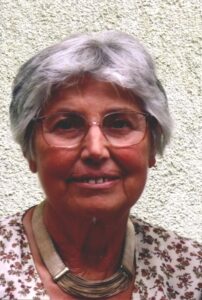Erzsébet Illés
His first and only workplace was the Konkoly Thege Miklós Astronomical Research Institute (whose name changed many times over the course of about sixty years). After the launch of the first artificial satellites (1957), he and his group participated in the astronomical observation of them, studying the physical relations between the Sun and the Earth based on their atmospheric deceleration - these were the initial steps of space research in Hungary.
In 1961, he completed a URAL-1 computer course – as one of the first astronomers – (his exam assignment was to write a program determining the points of a nomogram, with which he was the first in Hungary to use a computer to solve an astronomical scientific problem). Later, he worked on Eliott-803, URAL-2, ICT-1900, CDC3300 machines; around 1980, he and his colleagues switched to personal computers.
His first serious computer program was PERLO for the Elliott-803 machine of the Ministry of Light Industry in the ALGOL language, which, with the help of his colleagues, eventually developed into a complex program package: for the program, hundreds of thousands of observations from the entire Eurasian optical satellite observation network were digitized and processed.
The defining tasks of her space research activities included the determination of the orbits of artificial satellites and the investigation of the changes in orbits as a function of solar activity. The most important result - which she achieved together with her colleagues - was the recognition that in addition to the electromagnetic heating of the Sun, the solar wind also contributes to the heating of the Earth's upper atmosphere, which reaches the neutral upper atmosphere with a time delay through the inner magnetosphere with the help of the ring current. Based on the results obtained, she and her husband, astronomer Iván Almár, recommended improvements to the international upper atmosphere model.
As an invited lecturer, he has been continuously participating in university education since the 1990s - with his own conceptual comparative planetology lectures.
He is the author of more than one hundred and fifty scientific papers in foreign languages.
Awards: Albert Fonó Memorial Medal (Hungarian Astronautical Society, 2002); “Popular Scientist of the Year - 2010” (Scientific Journalists' Club (TUK), 2011); Zoltán Bay Award (Ministry of National Development, 2016); Dr Imre Szabó Award (Energy Management Scientific Association, 2017). The International Astronomical Union, at the suggestion of TUK, named the Hungarian-discovered asteroid 2004VA70 Illéserzsébet on Dec. 12, 2011.
László Elek's interview with Erzsébet Illés, in the book "Science is Born", Hungarian Astronautical Society, 2014, pp. 153-181.
Addenda about Erzsébet Illés's upper atmosphere research on the website of the ELKH Astronomy and Earth Science Research Center Konkoly Thege Miklós Astronomy Institute: under the title " History and results of upper atmosphere research with artificial satellites in Budapest and Baja " (2019).
- She listed most of her publications under the name Erzsébet Illés-Almár.
Created: 2023.06.03. 14:55
Last modified: 2024.04.25. 11:49

